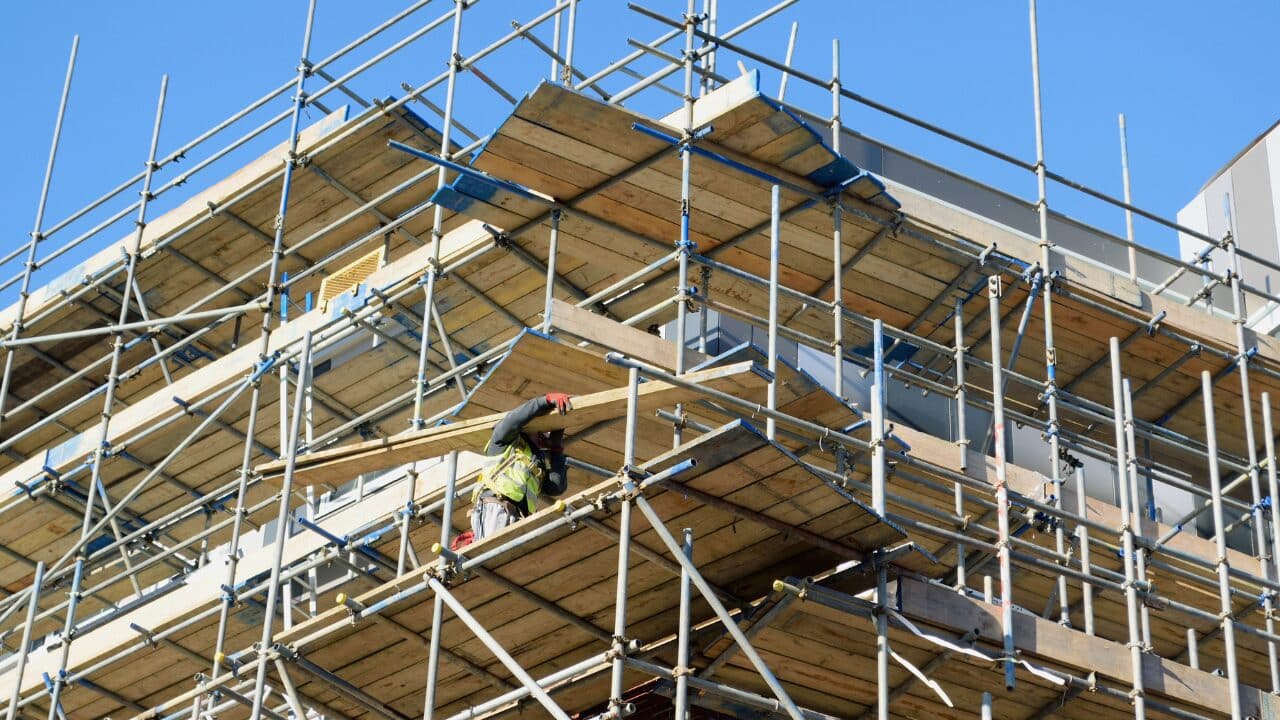What are the signs that a community, city, or country is growing? We are not talking about statistics and numbers, but about tangible, visible things in everyday life that show that, yes, we are doing well.
The answer is in the sky. Well, not exactly in the sky, but in structures that rise to reach the heights. Do you know what we are talking about? Here’s a clue: they are made from galvanised steel or aluminium, are known for making work safer for both workers and pedestrians, are used to increase efficiency, and are highly versatile. We are talking, of course, about scaffolding.
But why exactly is scaffolding a sign of progress?
These structures only appear when something is being created, improved, or preserved. In practice, this means:
- Investment is taking place: whether from a company, the government, or a property owner, someone is putting resources into transforming a space.
- The environment is changing: it could be a new building going up, a historic property being restored, or a shop undergoing a makeover before reopening.
- Professionals are working: bricklayers, painters, electricians, engineers. Scaffolding is the stage where a whole chain of jobs is in motion.
- The space will generate value: whether economic (shops, offices, flats) or social (schools, hospitals, cultural centres).
- The city is looking after what it has: scaffolding on old buildings means heritage is being preserved rather than left to deteriorate.
In short, scaffolding is like a three-dimensional billboard that says: “We are building the next chapter of this place.” And in the UK, one of the areas where these ‘billboards’ are becoming increasingly common is the North West, particularly in Manchester and Warrington.
Table of Contents
Scaffolding in Manchester
Cranes and scaffold frames have almost become part of Manchester’s skyline. The city is in the middle of an ambitious construction and regeneration drive, from gleaming high-rise apartments in the city centre to the restoration of Victorian warehouses in Ancoats.
Major projects such as the Northern Gateway redevelopment, new office towers at Spinningfields, and upgrades to public infrastructure mean months of scaffolding work across multiple sites. Even smaller-scale ventures such as shop refits, home extensions, and façade repairs add to the constant demand.
Manchester’s role as the UK’s largest sub-regional economy outside London and the South East, with a GDP topping £82.7 billion, keeps its construction sector thriving. Office refurbishments and extensions jumped 32% in 2024 compared to the previous year.
Furthermore, large-scale developments are in motion: the £140 million ‘Colloco’ office scheme, the £740 million Trinity Island residential project, and ongoing work at Manchester Airport City, NOMA, and MediaCityUK all keep scaffolding firms in steady work.
Scaffolding in Warrington
Warrington has carved out its own role as a growth hotspot. Its strategic position between Manchester and Liverpool makes it a magnet for logistics hubs, commercial premises, and new housing schemes. Regeneration of the town centre, upgrades to retail parks, and residential expansions in surrounding areas are all fuelling demand for scaffolding. Maintenance of historic sites and public buildings also ensures a steady workload for local firms.
The wider Cheshire & Warrington region sees annual construction spending above £1.1 billion, with almost two-thirds going towards housing and infrastructure. Moreover, Warrington’s population has surged from about 175,000 in 2021 to over 210,000 today, creating sustained demand for new building projects and, by extension, scaffolding services.
A National Trend with Local Impact
Nationwide, the residential and commercial scaffolding market has grown from £231 million in 2018 to £325 million in 2024, with forecasts reaching £501 million by 2032, an annual growth rate of 6.3%.
The aluminium scaffolding segment alone is projected to rise from £55 million in 2024 to £85 million in 2032, growing at 5.8% per year.
This surge in activity has knock-on benefits beyond the building site. It supports hundreds of local jobs, from scaffolders and site managers to lorry drivers delivering materials.
Supply chains profit too. Local steel and aluminium suppliers, PPE providers, and transport firms all see increased orders. Even nearby cafes, shops, and hotels benefit from the influx of construction workers and contractors, keeping more money circulating within Manchester and Warrington.
Manchester and Warrington Build Their Next Chapter in Steel
Both Manchester and Warrington are part of this upward curve.
Manchester’s skyline tells a story of urban reinvention, while Warrington’s streets reflect a town primed for expansion. In each case, scaffolding is a visible marker of economic momentum.





